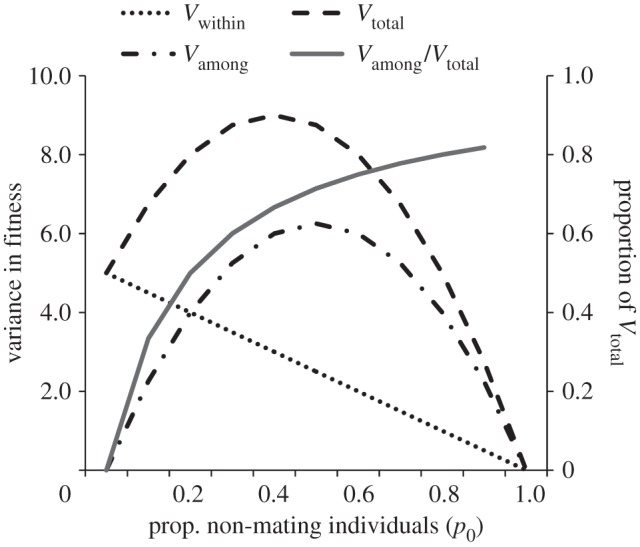Figure 1.

Partitioning the variance in offspring numbers for a simulated population of 100 males and 100 females as the proportion of non-mating individuals in the population, p0, increases using equation (2.3); in this population the mean and variance in offspring numbers are randomly distributed (mean ± s.d. = 5 ± 2.23); note that as p0 increases, the fraction of the total variance in offspring numbers, Vtotal, that lies among the classes of mating and non-mating males, Vamong/Vtotal (solid line), steadily increases.
